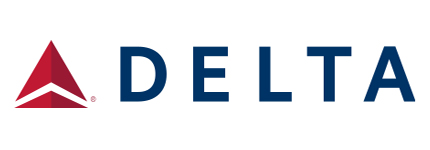Leeham News and Analysis
There's more to real news than a news release.
20-year old ISTAT definitions “archaic”
Special to Leeham News
By Michael Allen
- ISTAT definition “quite archaic.”
- Appraisers says aircraft disparity in ABS transaction can be due to lack of information provided by the arrangers.
Jan. 25, 2018, © Airfinance Journal, Dublin: “We get asked to value a portfolio of 35-aircraft,” says Rikard de Jounge vice president – asset valuations at Avitas.
 “No one tells you that the valuation is for an ABS transaction. They just ask for market and base values,” he adds.
“No one tells you that the valuation is for an ABS transaction. They just ask for market and base values,” he adds.
Stuart Hatcher, head of intelligence at IBA Group, says it is still a “secretive market”.
“Providing that we are dealing with sellers, the information is generally good. The issue we tend to find is with the arrangers. And the communication can be quite sporadic,” he says.
The other issue is how much you are including into a valuation for a lease-attached aircraft.
Propelled by MAX 10, Boeing thumps Airbus at Paris Air Show
 June 22, 2017, © Leeham Co.: The Boeing 737 MAX 10 received a rousing endorsement from lessors and airlines last week at the Paris Air Show.
June 22, 2017, © Leeham Co.: The Boeing 737 MAX 10 received a rousing endorsement from lessors and airlines last week at the Paris Air Show.
There were 361 orders and commitments announced, blowing through Boeing’s own forecast Monday of 240 orders. Never mind that 214 are conversions from other MAX orders, a fact Airbus COO Customers John Leahy used to downplay the program launch: the performance is a dramatic contrast to the poor reception Boeing received only three months earlier, at the ISTAT conference in San Diego, when a soft launch was rolled out by Boeing.
Pontifications: The pricing jigsaw puzzle
May 22, 2017, © Leeham Co.: The prices airlines and lessors pay for their airplane purchases have long been of intense interest to just about everybody associated with the airline industry.
The manufacturers want to know what their competitors are selling the planes for.
The airlines want to know what their competitors pay for their airplanes. The same is true for lessors and their competitors.
(Airlines are less interested in what the lessors pay; they are only interested in what they must pay the lessors to lease the airplanes, and aren’t really concerned about the lessors’ costs.)
Appraisers want to know the prices of new aircraft, and prices on the secondary market, to have a basis for predicting base and current market values today and 25 years in the future.
The credit rating agencies want to know that values of the airplanes to rate financing deals.
ISTAT Asia 2017: The fight for the lead
By Bjorn Fehrm
May 11, 2017, ©. Leeham Co: Airbus and Boeing had their customary presentation match at the second day of the ISTAT (International Society of Transport Aircraft Trading) conference in Hong Kong. Each OEM stuck to a theme throughout their presentations.
 Boeing’s was “market leader.” As the one that delivered the most aircraft during 2016, Boeing had the right to the claim. Airbus countered with “value protection leader.” The neo success saves airlines from having to change aircraft families. Read more
Boeing’s was “market leader.” As the one that delivered the most aircraft during 2016, Boeing had the right to the claim. Airbus countered with “value protection leader.” The neo success saves airlines from having to change aircraft families. Read more
Hong Kong, the future aircraft leasing gateway to China
By Bjorn Fehrm
May 11, 2017, ©. Leeham Co: We are attending the ISTAT (the International Society of Transport Aircraft Trading) conference in Hong Kong this week. The conference was opened by the Chief Executive for the Hong Kong region of China, Mr. C. Y. Leung. He gave an interesting perspective of the future of Hong Kong in the aviation finance market.
 Hong Kong is the number four finance center in the world. But the present tax rules prohibits aircraft leasing companies to establish Hong Kong as their hub for China and Asia.
Hong Kong is the number four finance center in the world. But the present tax rules prohibits aircraft leasing companies to establish Hong Kong as their hub for China and Asia.
The companies cannot deduct the costs of the aircraft ownership from their lease revenue, for non-Hong Kong operators. This will now change. Read more
Delta reviewing Airbus wide-body order, but more is going on
Subscription Required
Introduction
 April 12, 2017, © Leeham Co.: Delta Air Lines today said on its earnings call that it is reviewing its wide-body order with Airbus.
April 12, 2017, © Leeham Co.: Delta Air Lines today said on its earnings call that it is reviewing its wide-body order with Airbus.
At face value, the Delta statement might seem alarming. But as so often becomes the case, the “review” may not be what it seems.
Summary
- There is more activity about fleet requirements than simply “reviewing” the wide-body orders.
- Delta’s preparing to issue an RFP for single-aisle Airbus A321neos and/or Boeing 737-9/10s.
- Boeing hopes Delta will be a launch customer for the MAX 10.
- The NMA/MOM aircraft could be involved.
Pontifications: Warlick’s Warriors support ALS research
March 27, 2017, (c) Leeham Co.: It wasn’t the kind of presentation usually given at the ISTAT general meeting earlier this month. Peter Warlick, vice president of finance for American Airlines, announced to nearly 2,000 people that he has ALS (Amyotrophic Lateral Sclerosis), more commonly known as Lou Gehrig’s disease.

Peter Warlick
ALS attacks the muscular system and is typically fatal within two-five years. There is no cure.
Warlick actually revealed his condition last year, but I missed the announcement in which American also pledged a $1m donation to ALS research.
Although Pete is only a casual business acquaintance, for me, Warlick’s ISTAT announcement hit home. In 2015, a very close friend and

By Scott Hamilton
colleague died of ALS several years after diagnosis. Stan Bump was a neighbor and I served with Stan on the planning commission in the Seattle suburb in which we lived.
New Airbus-Japan venture aims for new aircraft
 March 14, 2017, © Leeham Co.: A new partnership, still in the Memorandum of Cooperation stage, between France and Japan aims to expand a relationship that could lead to joint development of advanced aircraft for Airbus.
March 14, 2017, © Leeham Co.: A new partnership, still in the Memorandum of Cooperation stage, between France and Japan aims to expand a relationship that could lead to joint development of advanced aircraft for Airbus.
The MOC was signed between the Ministry of Economy, Trade, and Industry of Japan (METI) and the Directorate General for Civil Aviation of the Ministry of Ecology, Sustainable Development and Energy (MEDDE) of the French Republic.
“An Airbus-Japan Ad Hoc Civil Aeronautical Industry Working Group will be established, and it will meet on a regular basis to discuss technology fields that could be considered for cooperation between Airbus and Japan such as material, aircraft system and equipment, or manufacturing technologies for the development of future Airbus aircraft,” Airbus said in a March 1 press statement announcing the MOC.
Airbus sales historically trailed Boeing badly in Japan, although the current backlog leans slightly in the European OEM’s favor: 87 to 74.
NMA “important step” for Boeing, says leading lessor

John Plueger, CEO of Air Lease Corp. Photo via Google images.
March 9, 2017, © Leeham Co.: Proceeding with a New Mid-range Airplane (NMA) is “an important step for Boeing,” says the CEO of one of the world’s preeminent leasing companies. On the other hand, Airbus probably is covered in the Middle of the Market sector.
John Plueger, CEO of Air Lease Corp, agrees with Airbus claims that it has the MOM sector covered.
“From Airbus’ perspective, I think that’s true,” he said in an interview with LNC during the ISTAT annual general meeting in San Diego this week. “I don’t think they feel they have a gap. They’re quite happy with the A321neo. The success of that airplane speaks for itself. They’ve got the A330neo. It would be very easy for them to just do a lighter weight version of the A330neo and whack $7m to $10m off the price of that airplane to compete.
“The question is whether operators will need the range of the neo in that equation,” he said.
“I also think…they are looking at modifying the wing for the A321 possibly even a new wing, which could increase the performance capability of that airplane significantly. For the Airbus product line, I would agree, I don’t think there is a need.”


